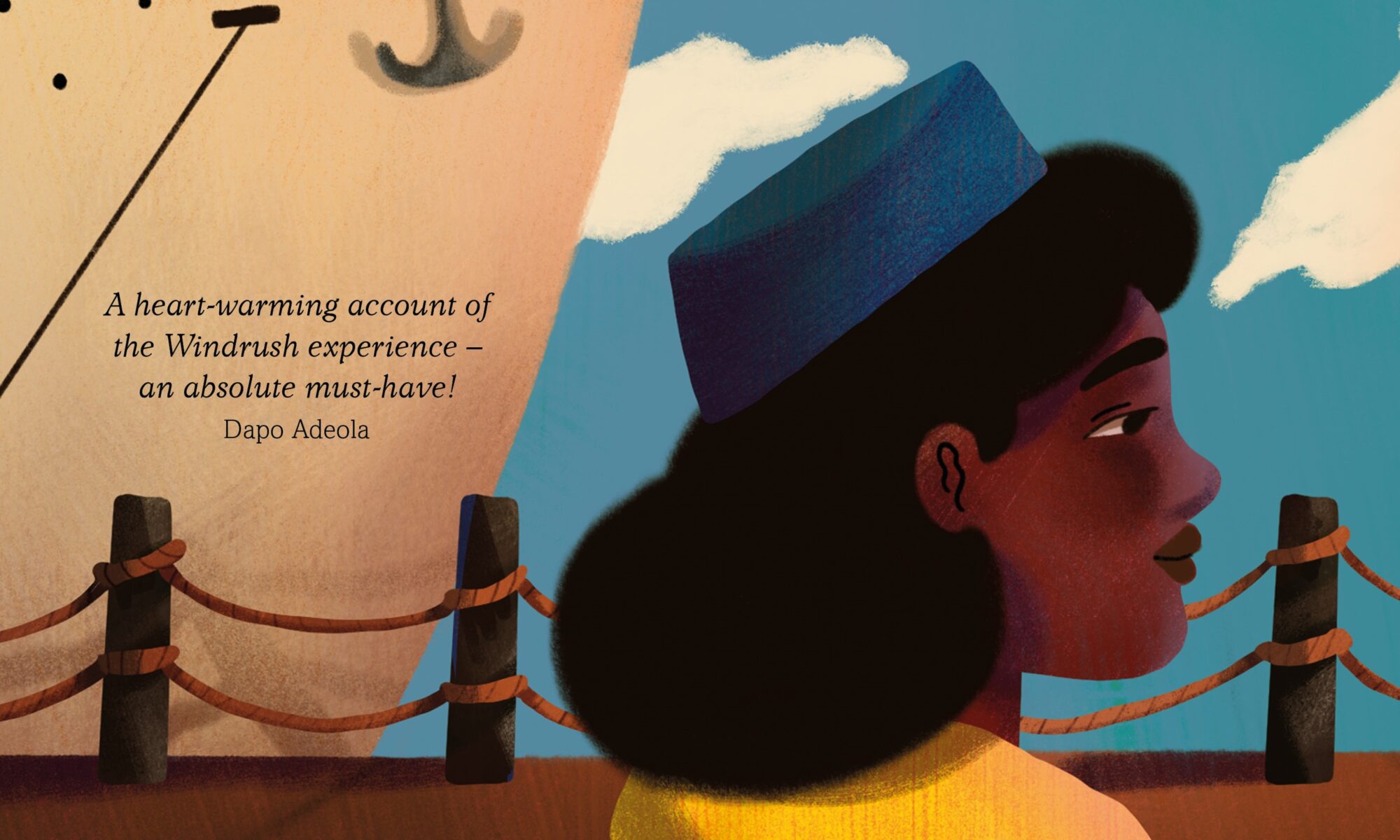Download this resource here: EIBF-2022-Granny-Came-Here-On-The-Empire-Windrush-iclusive-resource-with-images
Summary:
Granny Came Here On The Empire Windrush (by Patrice Lawrence, illustrated by Camilla Sucre) tells the story of one woman’s Windrush experience. This book offers a beautiful springboard for creating a simple sensory story that encapsulates this important part of our history.
This resource is great for:
Encouraging engagement for children who find it difficult to focus on just text and image alone.
Creating a sensory adventure that will make the story of the Windrush experience interesting for children with additional needs.
This book is particularly suitable for older children and teenagers.
The Sensory Story
Here are some ideas for creating a sensory story – but feel free to change and adapt these to make the story work for your child/children.
I would recommend going straight to the page with Granny’s cardboard suitcase. Here we find a recipe for the beginning of our sensory story! You will need:
- A small suitcase. It is possible to find cardboard suitcases like Granny’s one online (try looking for an ‘evacuee suitcase’.) But any small suitcase or bag will do.
- A jar – in the story this is filled with dried orange peel. Orange peel can be dried in the oven quite easily (have a look online for instructions). Or you could try putting a little orange extract on some cotton wool inside the jar to recreate the smell. Orange extract can be found in the baking section of larger supermarkets. You might also want to add a couple of drops of this to your dried orange peel to make it smell stronger.
- A pebble
- A little blue hat. It might be quite tricky to find a hat exactly like the one in the book. A blue beret would make a good substitute – or any hat you have to hand.
- Lace gloves – these can be bought online. For a slightly cheaper option look for white cotton gloves. Or simply use any gloves you have around the house.

Start reading the story to your child/children from this suitcase page. If the text is too long tell it in a simplified form pulling out the most important facts that relate to the props.
Set the scene by swaying from side-to-side with your child/children – as if on a ship. You could even download the noise of a ship’s horn!
Take the objects from the suitcase one at a time and let your child explore them – keeping them hidden away like this will make the story more intriguing.
When you reach the autumn page you could throw some leaves cut from tissue paper and maybe even use an ice pack for the ‘cold’. I would then skip to the Trafalgar Square page and use a grey, black or navy silky scarf or fabric for the dark London winter, maybe even draping this right over the top of your child/children’s head.
Then the mood changes…the bus arrives. You could use:
- A cap like the conductor wears.
- Something that toots like a horn, or dings like the bell on a bus. (A bicycle bell would do for this.)
- A toy bus – some children would enjoy feeling this running up their arm.
- Bus tickets – ask a kind bus driver to give you a really long ticket! Or cut strips of paper and curl them up.
- Maybe even break into a couple of verses of The Wheels on the Bus.

Try to make this section very cheery and upbeat to contrast with the sad part of the story that precedes it.
Then finish your sensory story on the wedding page. Try using:
- White fabric, white netting, bridal veils.
- Confetti
- Ring some wedding bells.
- Gold scarves or fabric for the ‘gold all around me’.
- A hand warmer in a little bag for the sun – you can find these in outdoor shops or online.
- And give a big cheer at the end!

Caution: Not all of these prop suggestions are toys! The props I suggest should not be used by children unsupervised.
